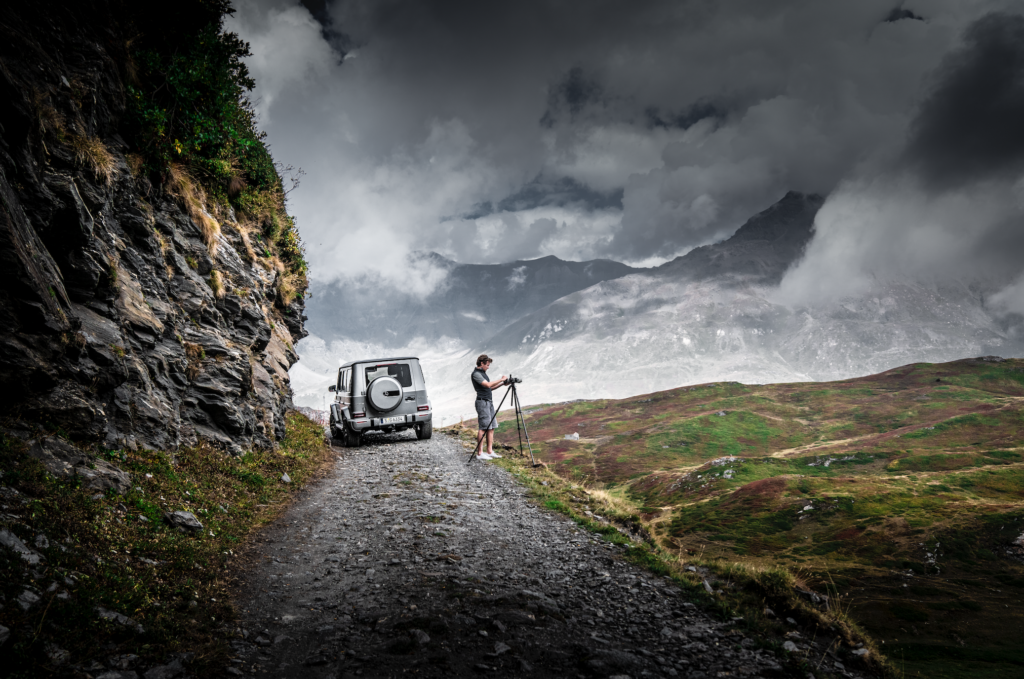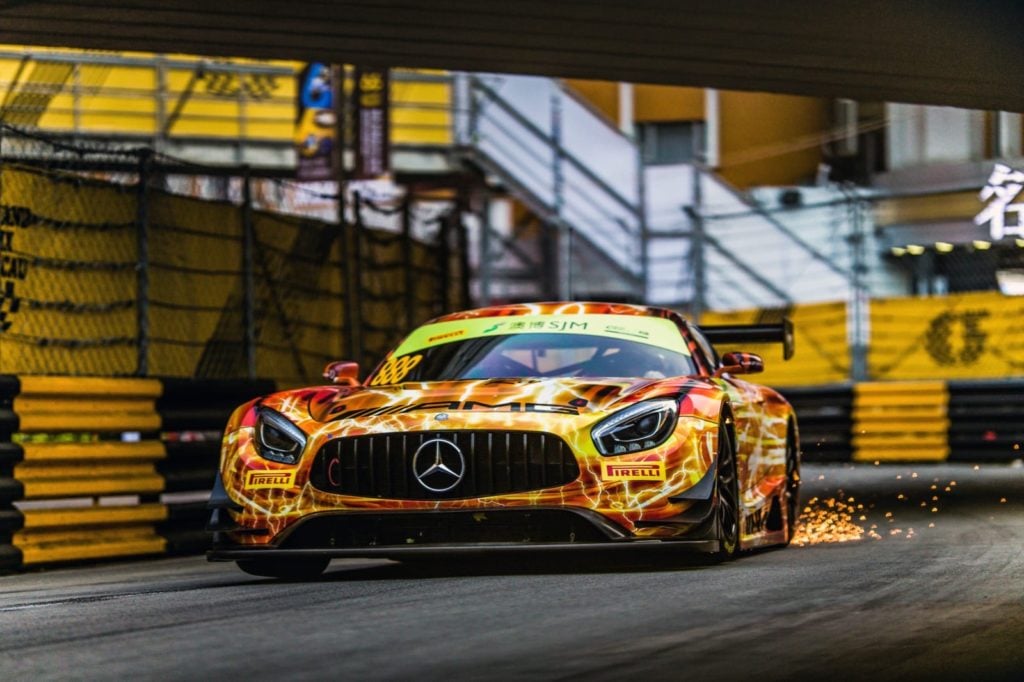Globetrotting Photographer Michael von Hassel On How He’s Finding Beauty Close to Home


Sophie Neuendorf

The German artist Michael von Hassel has traversed the globe documenting the natural wonders of the distant corners of the world. Now, in the midst of the COVID-19 pandemic, the photographer reflects on what it means to be an artist during times of upheaval, the importance of nature, and returning to the essence of our existence.
You’re based in Germany. How is the art market dealing with the ripple-effects of COVID-19?
The impacts and changes are massive. On a personal level, I have some collaborations with large corporations, some of which have now been canceled or simply not been renewed. Although I can understand the reasoning, it’s still no less saddening. I am worried about the very likely cancellations of three exhibitions. I had planned to show in Berlin this summer, later in Sylt, and finally in Budapest. I had also planned to journey to photograph in the United States on an incredible cross-country road trip.
On the positive side, some collectors, for example, quarantined somewhere, are using their free time to research and expand their collections. This would, quite possibly, not have happened if it weren’t for this new state of existence. This has given me more time to discover many landscapes closer to home. I am now riding an e-mountain bike in the beautiful landscapes of Germany and shooting native forests. This time will change us all and for the better, I am absolutely certain. One has to make the best of it.
Times of social unrest and upheaval have, historically, been well-documented by artists of the time. How do you think artists will respond to this unique time in history?
It has always been artists who processed the zeitgeist and made us all reflect on ourselves. This is how we also fuel our creativity during a crisis.
The star pianist no longer plays in a world-famous concert hall but gives a concert from the balcony of his apartment. The celebrated sculptor no longer travels between international exhibitions, collectors, curators, and gallerists, but stays in the studio and processes this all-encompassing disaster into a really great work of art. The photographer no longer jets around the world and meets FARC rebels in the Colombian jungle —like I did in January — but snaps trees behind his mother’s garden. In short, all of us are slowed down and forced to return to the essence of our existence.

Von Hassel in Columbia in January of 2020.
Many galleries have had to postpone their exhibitions and projects or move them online. How do you think this change to a predominantly online art market will affect artists?
I think art and the art market live very much from personal encounters. Hopefully, that will never change. I deliberately do not have a website because I do not want my pictures to be available 24/7 around the world, always seen in the wrong quality on a small mobile phone screen. Though, admittedly, I am currently sending my catalog via email instead of via post to interested collectors. At the moment, many people have time to think about their collections and perhaps add to them.
In the future, we will experience more video conferences, home offices, or fewer business trips, and there will be a ripple effect on the art world. We are already creating photomontages of artworks into virtual rooms, in which they may then hang. A gallery owner of mine has given up her gallery space and now has an online showroom, much like David Zwirner. She very successfully looks after her international collectors without a physical gallery space and I suspect that this model will be emulated much more. But the real personal encounter between people will always be unbeatable, hopefully.
Let’s be optimistic and imagine that we can go back to normality this autumn. What projects do you have planned for that time?
In the past, I’ve traveled to North Korea, Iran, or Transnistria, to document what is happening there. This year, I’m looking forward to a tour through the United States — I don’t consider New York City and Los Angeles the United States. I would like to discover the hidden gems and undocumented places. I recently purchased one hectare of land in Peru which I would like to photograph. The rainforest is such an important, and increasingly endangered phenomenon.
How do you choose your subjects? Is it a spontaneous gut feeling or more staged and planned ahead of time?
It’s mostly about places that I would like to experience. We generally understand many of these places as threats, such as North Korea. With the visit, however, one often realizes that the threat one reads about is, in fact, very different or does not exist at all. I would like to discover and understand these places, as well as the people that inhabit them.
Almost everywhere in the world one can expect to be treated in a welcoming, friendly way. If I behave myself in the very best way possible, then I will usually be helped everywhere. One doesn’t have to be afraid ‚ but, importantly, don’t be naive either.
Your works are usually quite large. Why do you work primarily in such large formats?
Most of the time yes. Images in these gigantic sizes simply look very different and they are very difficult to produce in this high quality. Not everyone can do that and I enjoy the challenge. For one of my latest exhibitions about Iran, I chose a small format (60 cm x 90 cm). The visitors were irritated and the sale did not go so well. A few told me that the pictures are simply too small.

Von Hassel is currently collaborating with Mercedes on seven specially designed vehicles.
You’re currently collaborating with Mercedes. How did that come about?
Companies in saturated markets often have the problem that they cannot meet their customers in an emotionally relaxed atmosphere. What is there? Trade fairs, car dealerships, advertisements, etc. So Mercedes AMG invited me to work with them. They gave me the creative freedom I need and so I developed seven ideas and gradually implemented them.
Even though it was not a commercial project, I was heavily criticized for this collaboration. Then I saw a large Warhol in the exhibition “Richter to Warhol” in the Albertina in Vienna, which featured a lot of Mercedes W125 racing cars. Of course, I don’t presume to compare myself to an icon such as Warhol in any way, but it assuaged my doubts about working with a large cooperation.
Many photographers will go to great lengths to realize a particular image. Which was your most dangerous project so far?
What is dangerous and what is not? I have, for example, crossed Siberia in a Lada Niva and drove to the northernmost point on earth that one can possibly reach with a 4×4. One has to drive during winter, where temperatures average -50 °C, because only then the swampy roads are frozen and therefore passable. We were lucky and the weather held up. If we had gotten into a snowstorm, that could have ended terribly. I was lucky to be with an extremely good team and well prepared.
A little luck is always part of it. Nothing is really dangerous and everything is dangerous too. I always need to suffer a little bit for a good series of pictures. But not too much.
Artists have historically found inspiration from their predecessors. Which 3 artists do you admire most?
Ansel Adams: I love to stand on car roofs. Heinrich Heidersberger: he sees the infinitely special in the visibly irrelevant. Sebastião Salgado: He put the energy of war into the replanting of a jungle and in an incredibly powerful photo series. It is pure inspiration, he creates life from death.
You live between two very different but equally beautiful cities: Munich and Berlin. In which do you feel most inspired?
Frankly, no city appeals to me particularly. Munich is my home, here I understand everything and everyone. There are many collectors here, as well as my studio and my team. But it is also very slow and traditional, leaving little room for the new and unknown. Berlin is the opposite. You cannot rely on anything and the city is much faster. Berlin’s soul lies in its small, beautiful corners and yet untouched areas. Berlin is still wild and colorful in between all of the gentrification. But I also know this city well.
What places inspire you then?
I’m truly inspired by the highlands in Colombia, by walking on the Camino de Santiago in Spain, by borders and by crossing them, by the sunlight at golden hour in the jungle, or my little mountain hut in Tyrol/Austria, which I miss terribly at the moment. There, I drink homemade pine schnapps with my neighbor, a kind herdsman. The best moments are captured when I’m by myself, at one with nature, kissed by inspiration. Those are the moments I want to return to again and again and again.